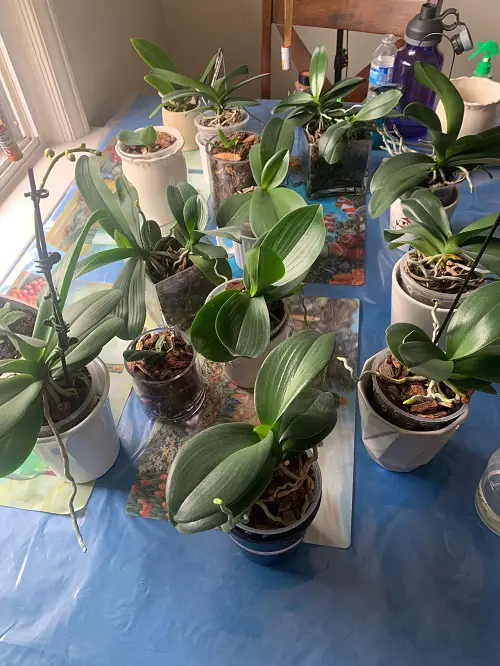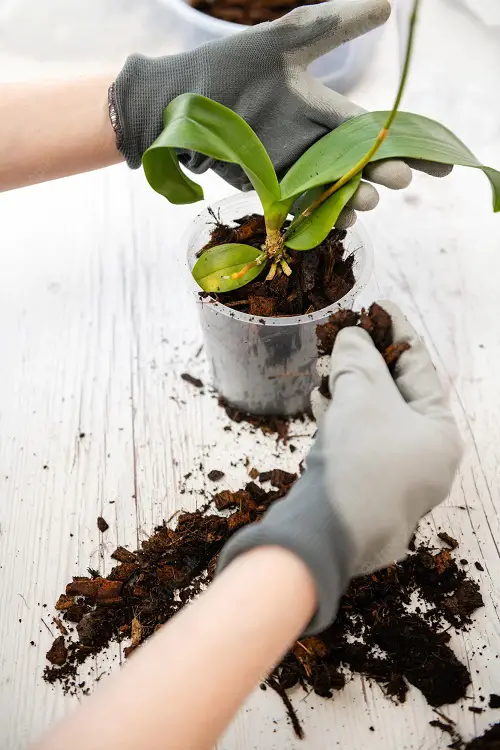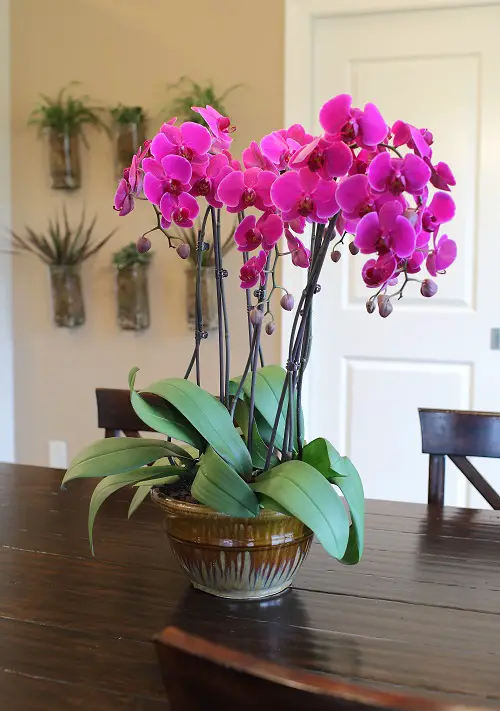Want your Orchids to Re-bloom quickly again and again and again? It’s possible if you follow the tricks shared here.

Once orchids stop flowering, they take a long time to flower again–some species, like Phalaenopsis, bloom within 9 months, and there are some, like Cymbidium, which can take even up to 2 years. But if you’re patient and follow the right regimen, you can reduce your waiting time and get your orchids to rebloom faster.
Do Orchids Rebloom?
In short, yes, they do. But not all orchids re-bloom. For instance, Phalaenopsis orchids are among the easiest to re-bloom. They blossom once a year, but with proper care and maintenance (cutting the flower spike above a node where a new spike can emerge, encouraging further blooms), you can make them flower two or three times a year.
Cattleya orchids are also easy when it comes to making them re-bloom as long as they get good light exposure, humidity, and a slight temperature drop at night.
For Dendrobium orchids, reducing the watering a tad bit in their rest period (After they have flowered for the first time) can trick them into blooming again. The most important point here to note here reblooming depends on the orchid variety you have, so research well before buying.
90 Different Types of Orchid Varieties You Can Grow
How to Get Orchids to Rebloom?
1. Hold Up Repotting After Orchids Finish Flowering or When You Buy Them

Avoid re-potting the orchids immediately in these three conditions: When they are flowering/just finished the blooming period/right after buying them. Because in these conditions, your orchid plant becomes weaker and it needs time to recover and strengthen itself. Still, doing this can put your plant under stress, resulting in flower drop and root damage.
The best time to re-pot them is 4 weeks after the last flower drops. It is the time when most species start their active growth phase, beginning to put on new roots, and foliage in planning for the next bloom. Also, make sure while repotting, the weather is warm and orchids show signs of new growth.
20 DIY Orchid Pot Ideas You Must Try
2. Prune Dead Flower Spikes
This is the most important trick! Once your orchid finishes flowering, examine for signs of revival–new buds appearing on the spike. If it is green and healthy and not completely dead, and you see some growth, leave it intact; you might see secondary blooms soon 😃.
If you see no new growth, it is necessary to snip off its old and dead spikes near the base, especially before the plant goes into its dormancy period.
Doing this redirects the plant’s energy towards growing new shoots and leaves and probably more flower spikes for upcoming blooms.
3. Give Enough Humidity
When the plant has finished blooming, make sure it gets plenty of humidity – you can either use a humidifier or keep its pot on a pebbled tray filled with water.
If you have multiple orchids, group them together with several other houseplants to create a micro-climate and mist their leaves once a day.
10 Ways To Increase Humidity For Houseplants That Work
4. Reduce Surrounding Temperatures a Bit During Night

As orchids flower according to season, they will react to changes in surrounding temperatures. Once they feel that the temperature is cooling down in the evening, they start the blooming cycle.
Some of the orchids that take benefit from cool night temperatures are Cypripediums, Dendrobiums, Oncidiums, Zygopetalum crinitum, Cattleya walkeriana, and Miltonia flavescens.
To promote this, shift them to an environment where daytime remains warm but nighttime temperatures drop naturally to some extent. Keep the plant on a windowsill or turn down the heat of the room in the evening – this will mimic the natural cycle of the plant, which will trick it into blooming again.
OR if they have finished flowering, this will induce dormancy quickly, and they’ll become ready for flowering again soon.
Use Lemon Juice for Orchids & These 7 Miracles will Happen
5. Stimulate Naturally

Orchids have natural stimuli that signal the plant that the growing season is over and it’s time to flower. No, they are not that smart to decide, but these plants respond to environmental cues like changes in day length, temperature, light, and moisture to determine their growth and flowering cycles
Some varieties are temperature sensitive (Cymbidium Orchids, Pansy Orchids, Masdevallia Orchids, and Dendrobium Orchids), and a few are light sensitive (Slipper Orchids, Oncidium Orchids, Vanda Orchids, and Cattleya Orchids).
Temperature-sensitive orchids are activated by natural cooling that comes in the fall. You can trick them as well by exposing the plant to around 50-55 F (10-12 C) temperature for a couple of weeks to stimulate blooming.
Even if you won’t provide cooler nights in the suggested range, it is more essential to provide a 10-20 F temperature drop than in the daytime.
Light-sensitive orchids may get their natural blooming cycle interrupted in homes as we have them lit all night. If you move them to a dark location for at least hours every night, where they are not exposed to any source of light at all – this will trick them into blooming again. Before doing so, it’s important to verify the orchid variety you have and whether or not it responds to shorter days.



